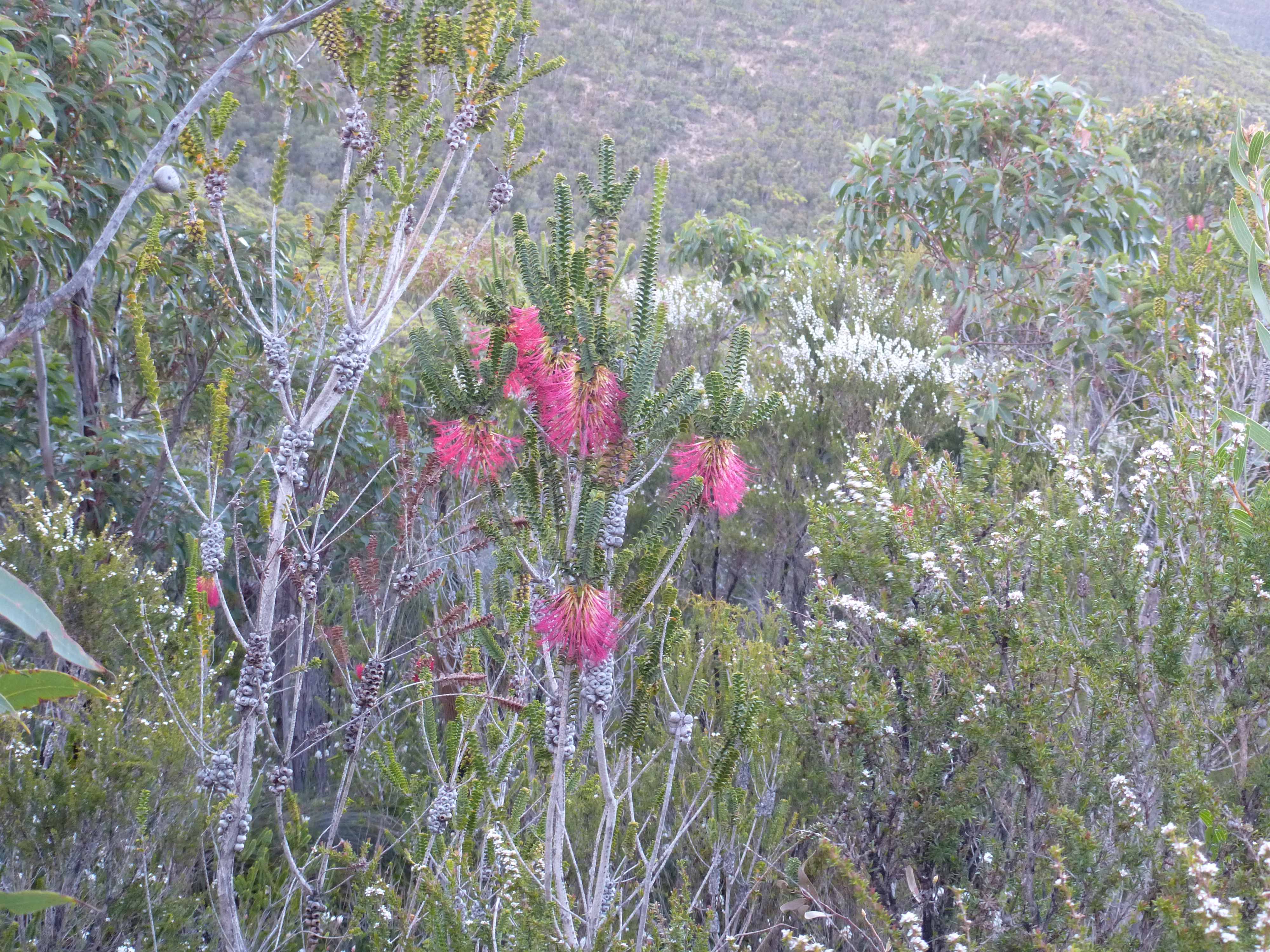Beaufortia Decussata on:
[Wikipedia]
[Google]
[Amazon]

 ''Beaufortia decussata'', commonly known as gravel bottlebrush, is a species of flowering plant in the myrtle family,
''Beaufortia decussata'', commonly known as gravel bottlebrush, is a species of flowering plant in the myrtle family,
Myrtaceae
Myrtaceae, the myrtle family, is a family of dicotyledonous plants placed within the order Myrtales. Myrtle, pōhutukawa, bay rum tree, clove, guava, acca (feijoa), allspice, and eucalyptus are some notable members of this group. All speci ...
and is endemic to the southwest of Western Australia. It has long stems branching only near the upper ends, and scarlet to orange-red flowers in a bottlebrush shape beneath the branches.
Description
''Beaufortia decussata'' is an erect, open shrub with few branches growing to a height of . The leaves are arranged in alternating pairs (decussate
Decussation is used in biological contexts to describe a crossing (due to the shape of the Roman numeral for ten, an uppercase 'X' (), ). In Latin anatomical terms, the form is used, e.g. .
Similarly, the anatomical term chiasma is named aft ...
) so that they make four rows along the stems. They are egg-shaped, pointed at the end, about long and usually have 5 veins visible.
The flowers are red to orange red and are arranged in heads about in diameter and long, forming a cylinder around the long stems under their branches. There are 5 sepals, 5 small petal
Petals are modified Leaf, leaves that surround the reproductive parts of flowers. They are often advertising coloration, brightly colored or unusually shaped to attract pollinators. All of the petals of a flower are collectively known as the ''c ...
s and 5 bundles of stamen
The stamen (plural ''stamina'' or ''stamens'') is the pollen-producing reproductive organ of a flower. Collectively the stamens form the androecium., p. 10
Morphology and terminology
A stamen typically consists of a stalk called the filame ...
s which give the flowers their colour and are much longer than the inconspicuous petals. Flowering occurs either from August to December or from January to April and is followed by fruit which are woody capsules. It was described in John Sims's ''Edwards Botanical Register
''The Botanical Register'', subsequently known as ''Edwards's Botanical Register'', was an illustrated horticultural magazine that ran from 1815 to 1847. It was started by the botanical illustrator Sydenham Edwards, who had previously illustrate ...
'' as "a very splendid shrub".
Taxonomy and naming
''Beaufortia decussata'' was the first species of ''Beaufortia'' to be described. It was formally described in 1812 by Robert Brown in William Townsend Aiton's ''Hortus Kewensis
''Hortus Kewensis, or a Catalogue of the Plants Cultivated in the Royal Botanic Garden at Kew'' by William Aiton was a 1789 catalogue of all the plant species then in cultivation at the Royal Botanic Gardens, Kew, which constituted the vast majori ...
''. The specific epithet
In taxonomy, binomial nomenclature ("two-term naming system"), also called nomenclature ("two-name naming system") or binary nomenclature, is a formal system of naming species of living things by giving each a name composed of two parts, bot ...
is from the Latin ''decussatus'' meaning "form crosswise like the letter X, the Roman numeral ten".
Distribution and habitat
''Beaufortia decussata'' occurs in the Esperance Plains, Jarrah Forest and Warren bioregions in the southwest of Western Australia, where it grows in tall shrubland in soils derived from laterite.Conservation
''Beaufortia decussata'' is classified as "not threatened" by the Western Australian Government Department of Biodiversity, Conservation and Attractions.References
{{Taxonbar, from=Q15394953 decussata Plants described in 1812 Endemic flora of Western Australia Taxa named by Robert Brown (botanist, born 1773)